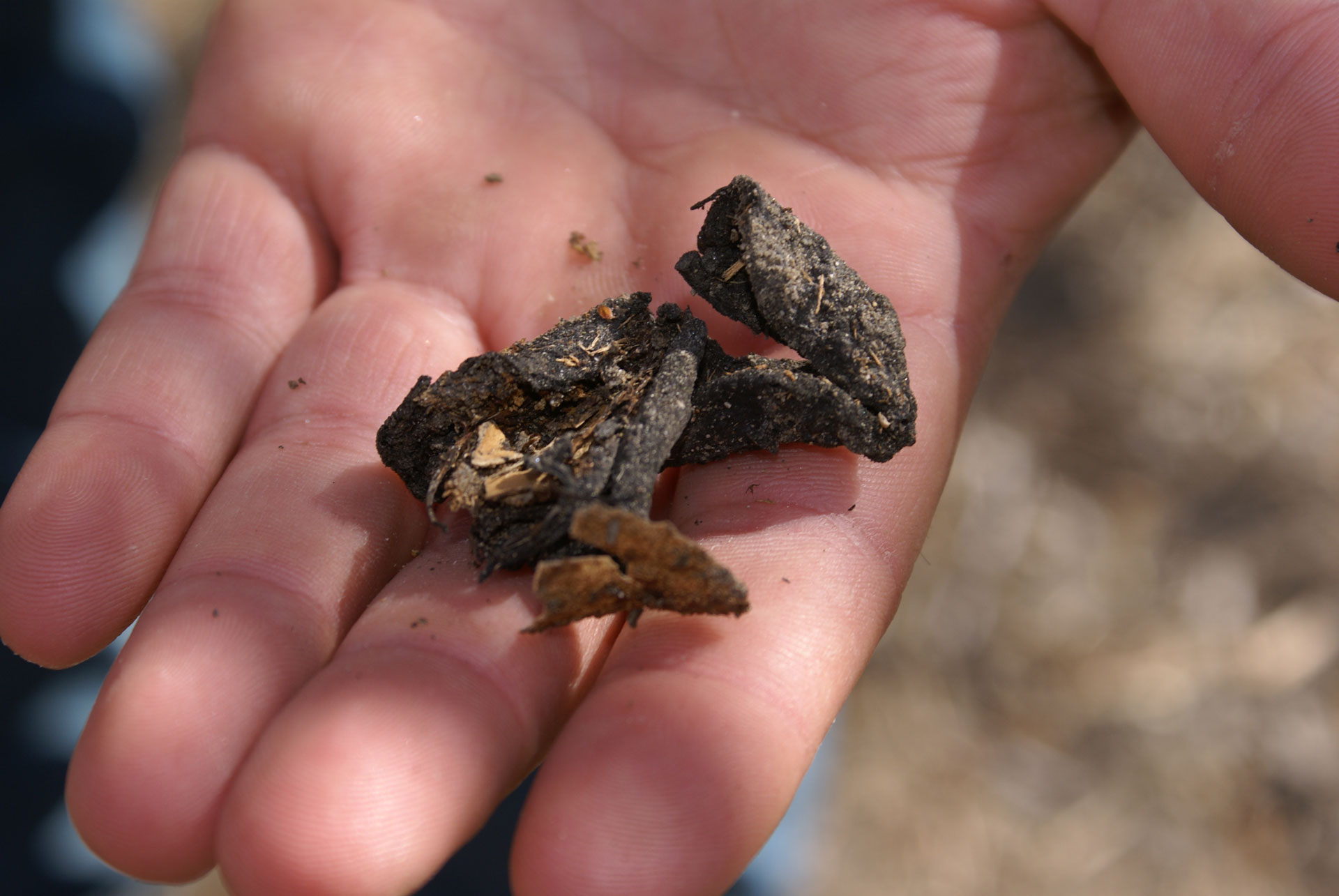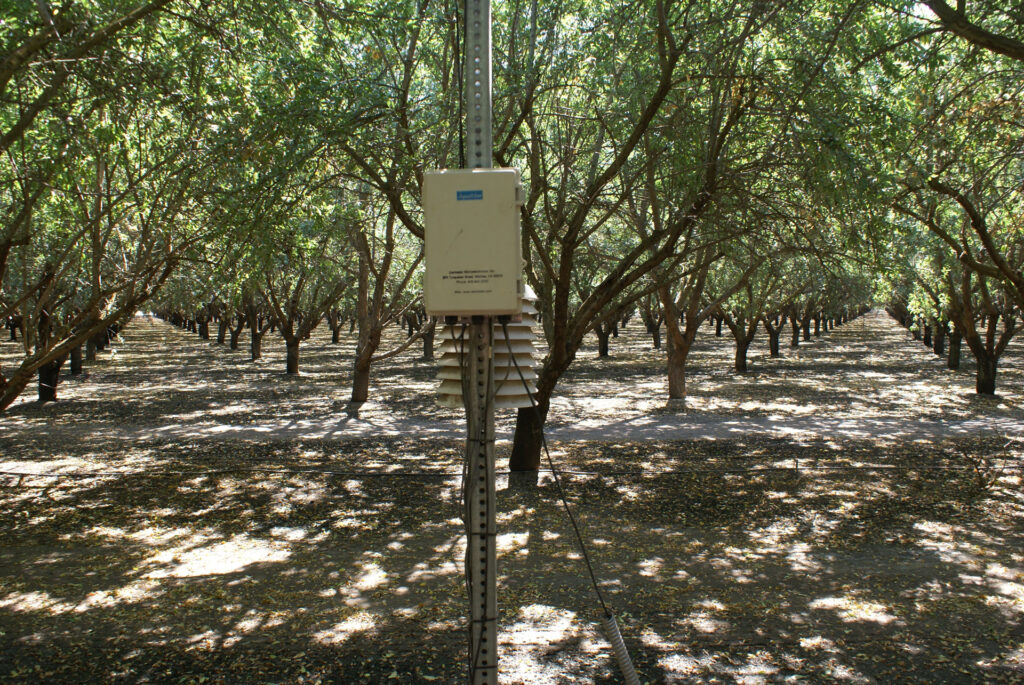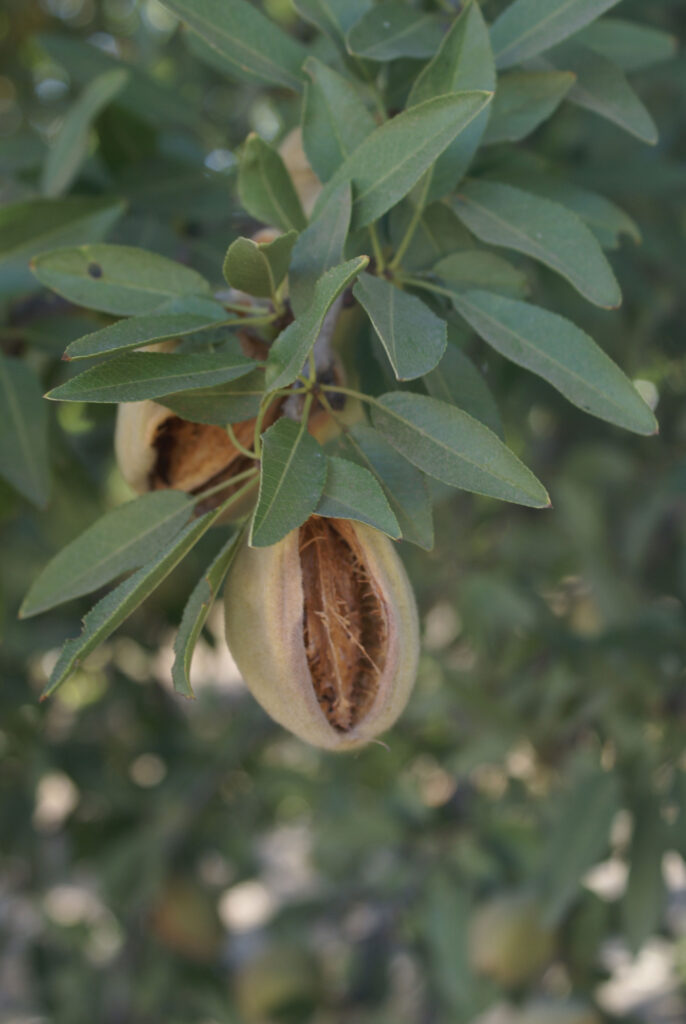
PCAs interviewed at the 2021 Crop Consultant Conference and in the field emphasized nutrition, sanitation, tracking degree days and mating disruption as their major tools to keep crop damage low in tree nut crops this year.
No surprise that navel orangeworm (NOW) and mite control were their two biggest challenges throughout a hot and dry summer, but they all had strategies that worked as well as some that worked less effectively.
What Worked
Their five most successful strategies for pest control in 2021 were:
Sticking with a Plan
“We had a good pest control plan,” said David Vieira, PCA for Gar Bennett who works in Tulare, Kings and Kern counties. “We took care of the things we can control.”
Vieira said he kept track of degree days and pest thresholds throughout the growing season and that that maximized insecticide spray coverage. Using degree days to track NOW flights resulted in a return on investment in chemical control.
There was nothing really different in insect pest control in tree nuts this year, Vieira said at the Crop Consultant Conference in September. Paying attention to trap counts and counting degree days helped keep the NOW populations suppressed in his orchards, which is key to preventing crop damage.
“You can’t miss a step with permanent crops and you can’t stop farming when prices are low; you have to keep production,” Vieira said.

Winter Sanitation
“Obviously, sanitation is very important,” said Justin Nay, PCA with Integral Ag. “We really stuck to our guns with the growers, and after a dry winter and money spent on orchard sanitation, we saw the results.”
Nay said there really is no substitute for good orchard sanitation as it puts them ahead of the pest numbers at the beginning of the growing season. Lower numbers of NOW in the orchard allow sprays to be more effective in controlling this pest.
Watching Nutrition
PCA Jim Pingrey said after shifting his attention to tree nutrition, he has been able to reduce chemical application for pest control.
Pingrey, with Colusa County Farm Supply, said his sap analysis study over the last three years led him to fine-tune his orchard nutrition plans, aiming to balance tree needs. After recognizing that high chloride levels were triggering early mite pressure, he set about to correct that with calcium injection. By lowering the chloride levels, he was able to skip a mite spray and, as an added bonus, lowered Alternaria levels and hull rot infections in his orchards.
Mating Disruption
Earlier NOW flights could have led to more generations over the season and more crop damage, but PCA Robert Smith with Ultra Gro said mating disruption puffers in east side orchards worked well this year to reduce populations. Yes, he said there was lower NOW pressure on the east side, but in those pistachio orchards, he was able to get by with only a hull split spray. As for mites, he said pressure in his orchards was lighter than expected, but he did not wait until July and instead sprayed with a less expensive product in May and achieved good control.
Monitoring and Treatment Thresholds
Good navel orangeworm control in almonds and pistachios can strain a management budget, said independent PCA Fred Strauss, but using traps and checking for thresholds can save some money. Traps are a good indicator of NOW pressure, Nay said, and they can mitigate a less-than-optimal sanitation program.

What Didn’t Work
Cutting Corners
Not following the pest management plan developed by your PCA. Sometimes, growers need to trim their budget in a low-price year, but Strauss said it is frustrating when the grower isn’t following the plan. With permanent nut crops, pest control can’t be left behind due to low markets. Following the protocol for each season pays off in crop quality and yields. Getting the timing right for a spray application to prevent NOW populations from spiking at harvest is an important step, he said.
Supply Chain
“This was a tough hurdle this year,” Vieira said. Shipping delays of products and higher prices for plastics and pallets cost growers time.
“Growers paid the price of not having the products they needed for their orchards.”
Saving a Spray
Taking a chance and skipping an insecticide spray without other mitigation measures can save money, Strauss said, but it also can cost in the form of crop quality. When it comes to husk fly in walnuts, he said it is important to identify location of the infestation and be sure to treat that area the next season to avoid crop damage.
Spraying out NOW
Relying exclusively on insecticides to control NOW is not an effective method of control, Nay said. Late damage and late harvest equaled more NOW infested nuts. Relying on insecticide sprays to reduce NOW populations in the orchard will not achieve a cleaner crop, he said.
With earlier NOW flights, good control can’t be achieved and other control tools can’t be optimized. Not one single control method works for NOW, all PCAs interviewed said. The foundation is orchard sanitation, along with mating disruption, insecticide sprays, monitoring and traps that can all play a part in pest management. Integrating biological controls and understanding integrated pest management protocols can also increase efficacy of pest management plans.










